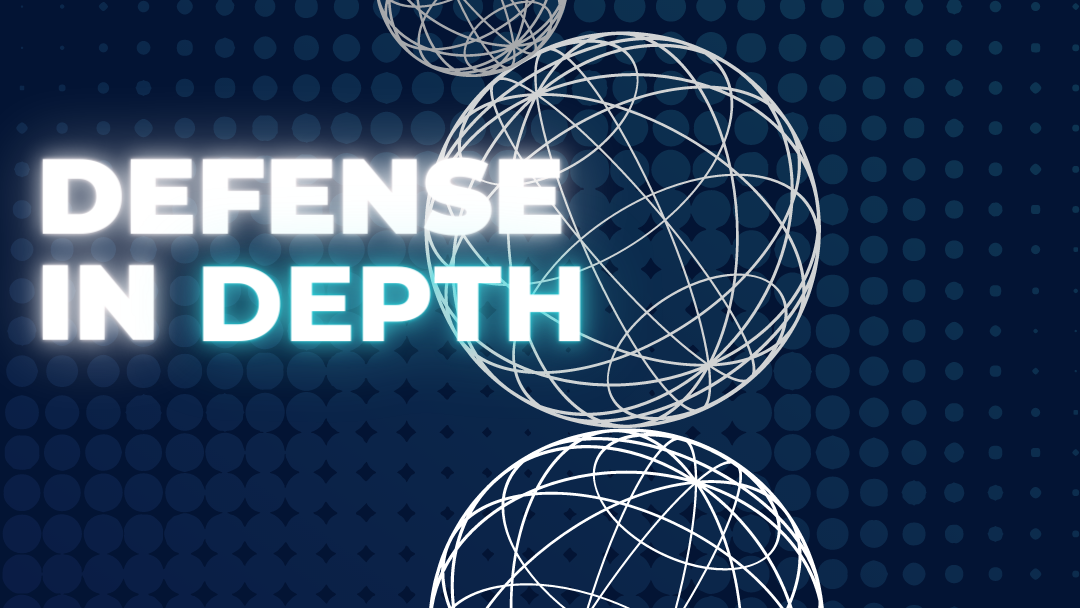What is Defense in Depth?

In the rapidly evolving world of digital security, defence in depth is a strategy that holds paramount importance, especially for Software as a Service (SAAS) offerings. Drawing inspiration from a military strategy that employs multiple layers of defence against potential attacks, defence in depth in the digital realm involves implementing various security controls and measures to protect data and information systems. This approach is particularly critical for SAAS products, which often handle vast volumes of sensitive data and serve a widespread customer base.
The New Playing Field: Public Cloud Environments
The public cloud has become the platform of choice for hosting SAAS products due to its scalability, flexibility, and cost-effectiveness. However, this shift has introduced new security challenges, necessitating a comprehensive understanding of cloud-specific threats and vulnerabilities. A defence in depth approach for SAAS in the cloud must encompass a broad spectrum of security measures that cover infrastructure protection, data security, access management, and incident response.
First Line of Defence: Infrastructure Security
The bedrock of a defence in depth strategy for SAAS is the security of the underlying infrastructure, which includes servers, network devices, and storage systems. In a public cloud environment, this often means working closely with your cloud service provider (CSP) and understanding the shared responsibility model, where the CSP is responsible for the security ‘of’ the cloud, while the customer is responsible for the security ‘in’ the cloud. Implementing security features such as firewalls, intrusion detection systems, and traffic encryption are vital to hardening your infrastructure.
Second Line of Defence: Access Management
Access management forms the second line of defence. In SAAS, this implies that only authorized users should access your applications and data. Implementing robust user authentication systems, such as multi-factor authentication (MFA), can significantly reduce the risk of unauthorized access. The principle of least privilege, where users are granted only the permissions they need for their roles, further limits potential damage if a user’s account becomes compromised.
Third Line of Defence: Data Security
The third line of defence in depth for SAAS in the cloud revolves around data security. Given the sensitive nature of customer data handled by SAAS providers, it is crucial to ensure data remains secure, both at rest and in transit. This involves encrypting data at all stages, managing encryption keys effectively, and employing techniques like tokenization. Regular data backups and disaster recovery planning further ensure data integrity and availability during unexpected incidents.
Fourth Line of Defence: Application Security
Application security forms the fourth line of defence. Given that software vulnerabilities can be exploited by attackers, secure coding practices and regular vulnerability scanning are essential. Adopting a DevSecOps approach can integrate security throughout the software development lifecycle, facilitating early detection and mitigation of security threats.
Fifth Line of Defence: Incident Response
Despite our best efforts, security incidents can occur. The fifth and final line of defence focuses on incident response. Having a well-planned, tested incident response strategy ensures that breaches, when they occur, can be quickly detected, contained, and remediated. This strategy should include creating a dedicated incident response team, defining clear roles and responsibilities, and establishing strong communication strategies.
Layering Compliance with Defence in Depth
Compliance with regulatory standards like GDPR, HIPAA, PCI-DSS, or CCPA sets important data security and privacy benchmarks. While maintaining compliance should not be mistaken for a comprehensive security strategy, integrating these efforts with your defence in depth strategy will not only help meet regulatory requirements but also fortify your security posture.
Fostering Security Awareness
Security awareness within your organization is a significant aspect of defence in depth. Regular training, fostering an environment where employees feel comfortable reporting potential security issues, and instilling a culture of security mindfulness, can significantly strengthen your defence strategy.
Leveraging Automation
Automation can handle routine security tasks swiftly and accurately, freeing your security team to focus on strategic initiatives and incident response. Automated systems for continuous monitoring and instant flagging of potential security incidents can significantly reduce the window of opportunity for attackers.
Understanding Threats and Vulnerabilities
Recognizing the threats and vulnerabilities facing your SAAS product is fundamental for defence in depth. Regular penetration testing and vulnerability assessments can reveal weaknesses in your systems, enabling you to focus your security efforts where they are needed most.
Regular Auditing and Monitoring
The success of a defence in depth strategy relies on regular auditing and monitoring. Consistent auditing ensures that your security measures function as expected, while continuous monitoring of system logs and user activity can provide early detection of malicious activities.
Adopting Continuous Improvement
In the dynamic world of cybersecurity, a defence in depth strategy cannot be static. Your defence in depth strategy must adopt a mindset of continuous improvement. Regular evaluation and updating of your security strategy can help you stay ahead of potential threats.
Conclusion
Defence in depth for SAAS in the cloud is not about implementing one layer of security and considering the job done. Instead, it’s about integrating multiple layers, each contributing to a robust security posture. The combination of infrastructure security, access management, data security, application security, and incident response, layered with regulatory compliance, security awareness, automation, understanding of threats and vulnerabilities, and regular auditing, offers a holistic approach to safeguarding SAAS products in public cloud environments.